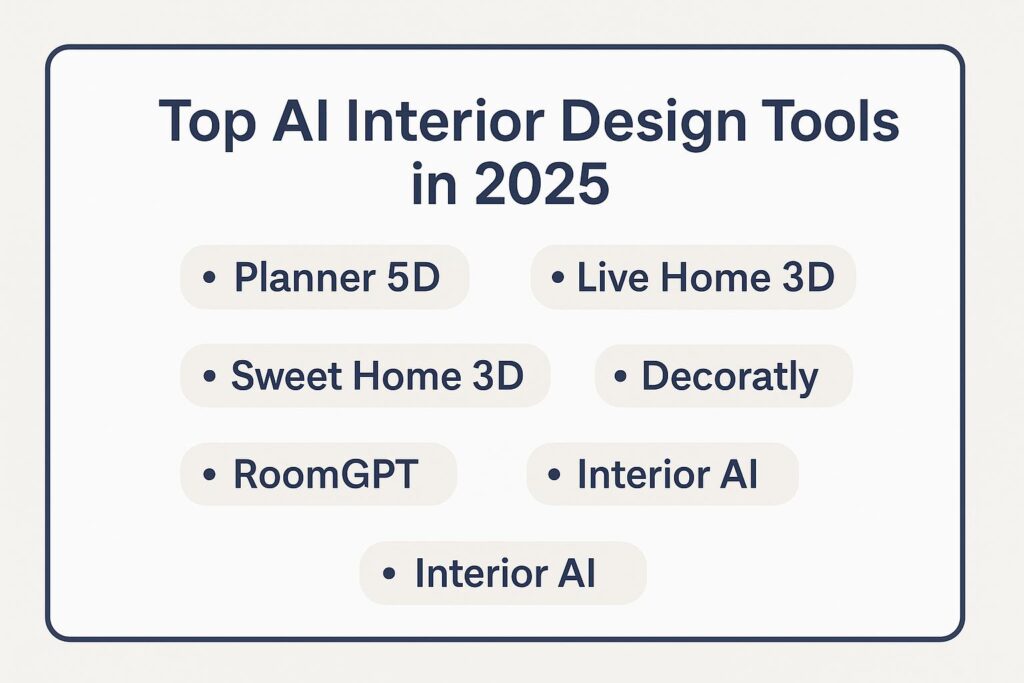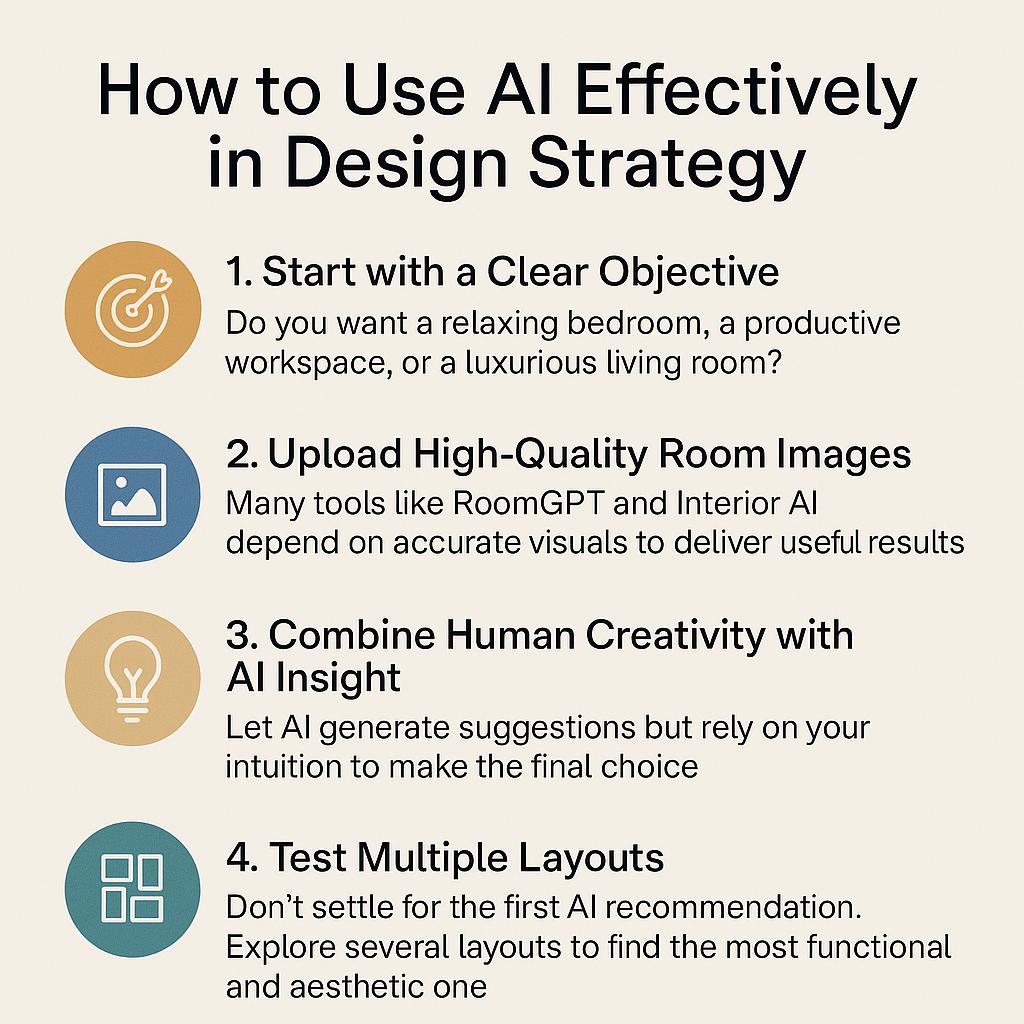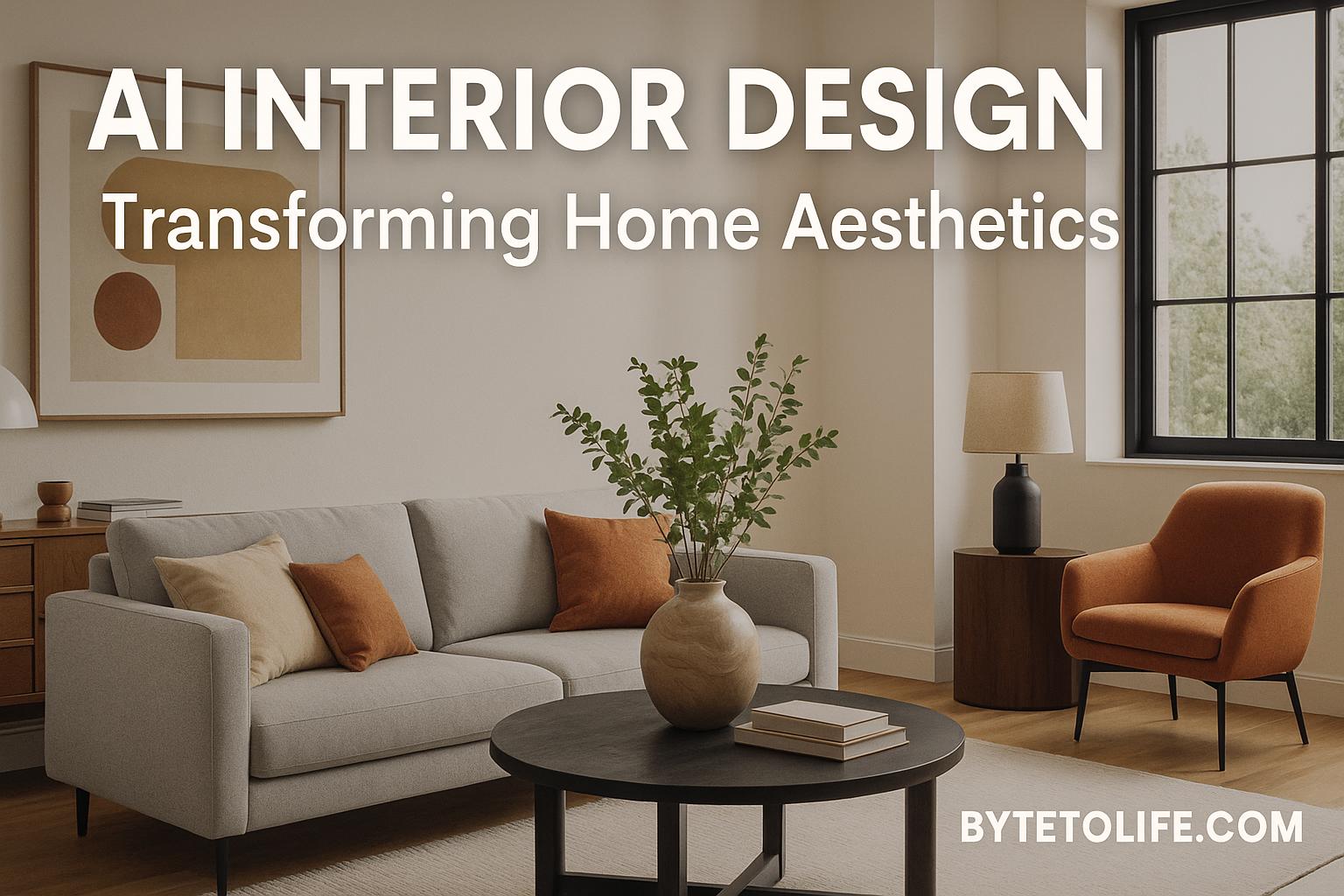Artificial Intelligence is transforming entire industries in 2025 — including interior design. What once required teams of professionals and long hours of deliberation can now be streamlined using AI tools that generate layouts, visualize décor changes, and recommend personalized styles based on data.
This article explores how AI is transforming interior design from both a functional and creative perspective — including tools, benefits, limitations, and what the future holds. Whether you’re a designer, homeowner, or simply tech-curious, this is your guide to AI-powered aesthetics.
Table of Contents
- The Rise of AI in Interior Design
- Top AI Interior Design Tools in 2025
- Benefits of AI in Interior Design
- How to Use AI Effectively in Design Strategy
- Limitations and Ethical Considerations
- Future Trends in AI-Powered Interior Design
- Conclusion
The Rise of AI in Interior Design
Interior design is becoming increasingly data-driven. AI has made it possible to analyze millions of design patterns, user preferences, and even psychological responses to colors and shapes. The result? Designs that are not only functional but also deeply personalized.
AI leverages computer vision, machine learning, and NLP to:
- Scan rooms and detect features automatically via smartphone camera.
- Suggest furniture and layouts based on user lifestyle.
- Predict design trends from massive datasets (Pinterest, Instagram, etc.).
- Create 3D renderings instantly for design previews.
Top AI Interior Design Tools in 2025

1. Planner 5D
This tool uses AI to generate multiple design renderings for a single room. Users can switch between styles, explore furniture ideas, and visualize everything in 3D or AR. Great for beginners and pros alike.
2. Live Home 3D
Known for powerful walkthroughs and real-time simulations, Live Home 3D also features AI-powered suggestions for furniture arrangements and lighting setups. It’s cross-platform and great for immersive planning.
3. Sweet Home 3D
An open-source project that leverages AI for functional layout design. It’s ideal for those looking to modify space dimensions and structure without a learning curve.
4. Decoratly
Transform your room’s look with a single photo. Decoratly uses AI to visualize different themes and even allows users to crowdsource design feedback from its community.
5. RoomGPT
Using generative AI, RoomGPT can take a real photo of your room and generate multiple themes instantly. It’s ideal for clients who need inspiration or quick conceptualizations.
6. Interior AI
Interior AI helps real estate agents and architects render spaces with specific themes — modern, Scandinavian, minimalist — and is popular among Airbnb hosts and content creators.
Benefits of AI in Interior Design
Why are so many people — from DIY decorators to professional designers — turning to AI? Because the advantages are both creative and practical:
- Speed: Instantly generate layouts and design alternatives.
- Cost Efficiency: Reduce consultation fees and unnecessary purchases.
- Personalization: Designs tailored to your unique taste and lifestyle.
- Data-Driven Insight: Understand what color, lighting, and style combinations statistically improve comfort and productivity.
- Virtual Testing: Visualize paint, wallpaper, or new furniture before buying.
According to Better Homes & Gardens, AI design tools are empowering homeowners to achieve magazine-worthy spaces with minimal guesswork.
How to Use AI Effectively in Design Strategy

1. Start with a Clear Objective
Do you want a relaxing bedroom, a productive workspace, or a luxurious living room? Artificial intelligence thrives when it has a clear objective to pursue.
2. Upload High-Quality Room Images
Many tools like RoomGPT and Interior AI depend on accurate visuals to deliver useful results. Ensure your room is well-lit and clutter-free before uploading.
3. Combine Human Creativity with AI Insight
Let AI generate suggestions but rely on your intuition to make the final choice. A hybrid approach leads to the best outcomes.
4. Test Multiple Layouts
Don’t settle for the first AI recommendation. Explore several layouts to find the most functional and aesthetic one.
5. Use AR for Final Review
Augmented Reality (AR) allows you to place digital furniture into your real space. This is a final checkpoint before purchase.
Limitations and Ethical Considerations
No technology is perfect — and AI in interior design has its own limitations:
- No Human Empathy: AI can’t understand emotional nuances like a real designer can.
- Limited Cultural Sensitivity: Global design traditions and sensitivities are still poorly understood by many AI tools.
- Privacy Risks: Uploading room photos may expose personal environments. Always use trusted platforms.
- Inaccurate Object Sourcing: Some AI tools recommend items that are out of stock or unavailable in your region.
AI Doesn’t Replace Designers
While AI can assist in automating tasks and visualizing outcomes, the role of a professional designer remains invaluable. They bring context, storytelling, and human judgment to every space.
Future Trends in AI-Powered Interior Design
1. AI + IoT Integration
Imagine lighting systems that adapt to your mood or furniture that tracks posture and health. AI will increasingly work with smart home devices to create adaptive living environments.
2. AI-Driven Material Selection
AI will help select eco-friendly materials based on environmental impact scores, promoting sustainable design choices.
3. Generative AI for Architecture
Instead of just interior design, generative AI will soon assist architects in blueprint creation, structure modeling, and even city planning.
4. Personalized Shopping Feeds
AI will curate shopping recommendations based on your design preferences and room dimensions — think Pinterest meets Amazon meets an interior decorator.
5. Voice-Controlled Design Commands
Future platforms will allow users to speak ideas (“Show me a Bohemian-style living room layout”) and receive instant results.
Conclusion
Artificial intelligence in interior design is more than a passing fad — it’s revolutionizing the industry. Whether you’re planning a home renovation or decorating a studio apartment, AI tools offer speed, creativity, and clarity. Used wisely, they democratize high-quality design, allowing anyone to create spaces that reflect who they are.
While it’s not time to fire your designer, it’s definitely time to empower them — or yourself — with AI tools that can elevate any space, one pixel at a time.
Written by ByteToLife.com | All tools and platforms referenced are non-sponsored. External links verified as of June 6, 2025.



